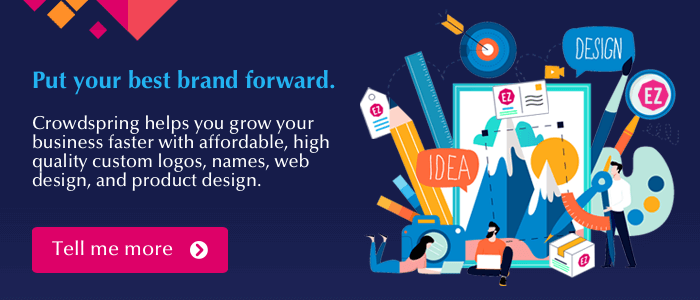15 Email Marketing Best Practices That Drive Results

Sending out an email is easy. But marketing via email isn’t.
Email marketing requires strategy, good execution, and testing to get the best results. And it remains one of the best marketing channels for businesses of all sizes and in most industries.
Email marketing is a cost-efficient way to drive conversions and engagement. It’s the best and often lowest-cost marketing channel to kickstart marketing campaigns, promote products and services, and newsletters.
But to do email marketing well, you must create a strategy, set goals, and pay attention to the details.
Here are 15 email marketing best practices to help drive results:
1. Build your email list
It’s easy to buy an email list and launch a quick campaign. And if you’re starting a business, it might be tempting to get a head start with a purchased list.
But this isn’t a sustainable way to grow your business. There are many reasons why you should avoid buying generic email lists:
Email list providers often include email addresses that did not consent to be part of the list. So, people who don’t know about your brand may be annoyed at the cold outreach.
This could damage your reputation.
It’s better to start your campaigns from scratch and introduce your company properly by communicating your intentions.
Powerfully simple strategy for business growth

Our brand identity workbook has actionable insights and steps to help you build a strong brand identity.
We just emailed the brand identity workbook to you.
2. Prioritize timing
Timing is essential in email marketing. You need to plan if you want the best results for your campaigns.
For example, most brands should avoid sending an email on a Friday evening since most people have already left their jobs to enjoy the weekend. If you must email on a Friday, send it no later than noon. It’s best to email earlier in the week and during working hours (most experts recommend that you send emails Tuesdays, Wednesdays, and Thursdays between 10 am and 2 pm).
Don’t forget to create unique campaigns for holidays and other special occasions such as Christmas and New Year’s. Plan email marketing campaigns appropriate for these occasions, and don’t forget to inject your brand personality into campaigns promoting these special events.
3. Determine the right email frequency
People don’t like to be bombarded with lots of emails. Studies show that companies that send just one newsletter weekly have the highest average open rates.
So, be sure you’re not emailing your customers and prospects too often. If you have many things to say, consider how you can combine them into a single email. And consider timezones. If you’re emailing customers on the other side of the world, be sure you send your emails when they’re likely to be awake and near their computer or phone. Otherwise, your email will sit in their email inbox, and by the time they wake up, dozens of other emails will push yours deep into their inbox.
Also, consider sending follow-ups. People are busy. And while you shouldn’t send follow-ups for all emails, you should follow up on some emails. For example, if you are running a special promotion that expires in a few days, send a follow-up a few days before the promotion ends to remind people that it’s ending.
4. Create an email drip campaign
Marketers know that one-time emails are not enough to nurture relationships with people. Consider drip campaigns instead.
Drip campaigns send scheduled, pre-written messages to customers or prospects.
For example, welcome emails are the most popular drip campaign. This is usually a series of emails informing new leads about your services, discounts, etc., and introducing your brand.
The first email could be about discounts, followed by an introduction to your loyalty program, your team, your brand’s mission, and more. You’ll be able to promote and introduce your brand effectively and wholesomely through a welcome drip campaign.
But be sure to coordinate your drip campaigns with other email marketing. You don’t want to send emails daily to customers and prospects.
And use automation to simplify the process. Email marketing tools can help you automate drip campaigns so that you don’t have to create emails or keep track of schedules manually.
5. Write engaging subject lines
A good subject line that inspires curiosity is vital to a successful email campaign. After all, how can your campaign be successful if nobody opens your emails?
Write engaging subject lines to increase the odds that people will open your emails. Consider the following techniques within the subject line:
- Using the person’s name
- Using numbers such as prices, discounts, etc.
- Asking a question
- Telling a joke
- Making an announcement
Experiment and make sure that your subject line aligns with the email content. Your goal is for people to open your emails to read what you have to say, but if the contents of the email don’t match the subject line, people will lose trust in your brand.
6. Encourage people to reply to your emails
People don’t like it when they see a “no-reply” sender address. Using the “no-reply” address appears like a dead-end. And it usually is.
So make sure that people can reply to your emails and demonstrate that you’re listening to what they have to say.
7. Update your email list
Expect emails to bounce from time to time. People leave jobs, companies go out of business, and people change their email addresses. This is normal.
So, you must consistently update your email list to remove hard bounces (when there’s a permanent failure in delivering that email to someone).
Clean out bounced emails to have a more organized list, add new contacts, and redirect your operations to the right people.
8. Write engaging email copy
Your main goal is to get people to open your emails. But that’s never enough. Ultimately, you want people to read what you write.
Here are some tips on writing an engaging email:
-
- Use active voice
- Determine your objective and highlight it in your email
- Know your audience and tailor the email effectively (e.g., their interests, attitude, knowledge, etc.)
- Use “you” when addressing the receiver
- Don’t use complicating words
- Use white space effectively
9. Test subject lines, send times, and copy
A good marketer makes a habit of testing everything, including their email campaigns. This is how you determine which campaigns (and tactics within a campaign) drive the best results.
For example, you can test the identical email copy but with different subject lines or test identical subject lines with other content. This is called A/B testing.
Email campaigns are inexpensive. Optimization will make them even more cost-effective.
10. Allow people to unsubscribe easily
Some people may want to unsubscribe from your emails. Don’t make them feel trapped. Doing so will only encourage them to mark your emails as spam.
Make it easy to unsubscribe.
Here are some best practices for unsubscribe links:
-
- Use hyperlinks to lead your customers to the correct unsubscribing page
- Use the word Unsubscribe so customers can find it easily
- Make the Unsubscribe button large enough for mobile users
- Provide a short unsubscribing process on your footer
11. Prioritize personalization
Make an effort to personalize your emails. People love it when they’re being catered to personally. It’s one of the most effective ways to make people feel valued.
There are many ways to personalize your emails. Some are:
-
- Using the recipient’s name when greeting
- Segmenting your emails and tailoring your emails accordingly
- Sending emails based on specific actions
12. Be consistent
Be consistent in delivering quality content and stick to your promises.
If you promised weekly newsletters about technology every Sunday, then deliver valuable content about technology at the promised time.
For example, Career Contessa focuses on delivering helpful weekly newsletters every Sunday about how working women can elevate their careers and professional development. The company also displays feedback from subscribers on its site to attest to the efficacy of its newsletters.
And be sure to always use a consistent branding and brand voice across all communication channels to be memorable.
13. Reward loyal subscribers
Rewarding your loyal subscribers is one of the best ways to show customer appreciation and strengthen relationships. You can offer discount codes for products or services, coupons, etc.
There are many benefits to an email loyalty program:
- Increases purchases
- Acquiring more customers
- Increases brand loyalty
- Increases customer engagement
For example, Hotel Tonight’s HT Perks loyalty program offers hotel discounts from all over the US. The app also provides discount codes through its exclusive referral program to boost brand loyalty while attracting new customers.
14. Integrate social media into your campaigns
Most of your audience is already on social media. Stay connected with your audience, and don’t forget to include your social media accounts in your emails.
Make it known that they don’t have to go through the trouble of emailing to contact you – they can easily reach out through social media.
15. Have a clear call to action
The best way to see actual results is to inspire action. You need to have a clear and actionable CTA (Call-To-Action) to guide people on the next steps.
CTA placement is vital to the success of your calls to action. Put the CTA in an awkward position, and it could compromise your email and confuse people.
So be sure to invest in good email design to optimize your email campaigns.
There are many ways to market successfully, but email marketing remains one of the best ways to grow a business. Follow these best practices to get a competitive advantage for your business.









